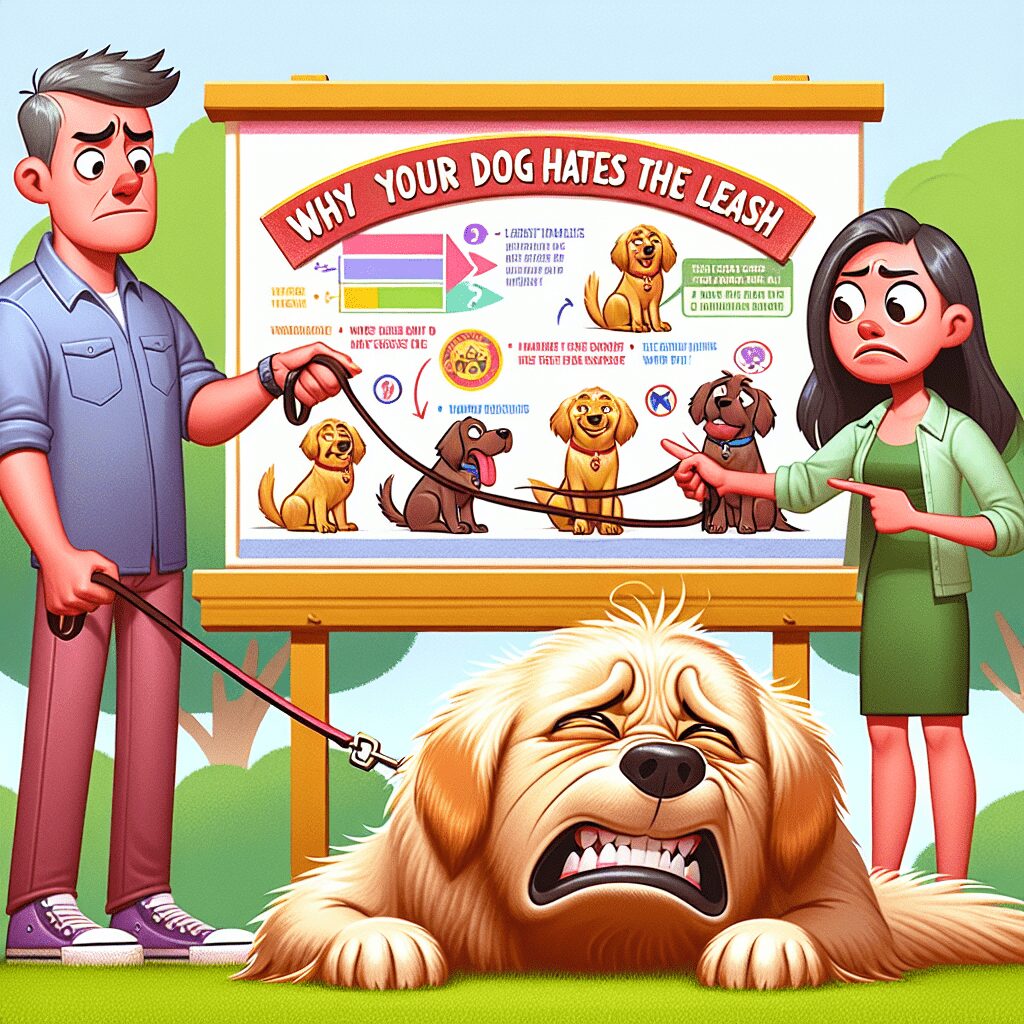Unleashing Happiness: Tips for Easing Your Dog’s Fear of the Leash
As a devoted dog lover and seasoned dog trainer, I’ve seen firsthand how joyful walks can transform the bond between a dog and their caregiver. Yet, many dogs tremble in fear at the sight of a leash. It’s a common issue, and if you find yourself grappling with this, you’re not alone. In this guide, we’ll explore effective strategies to ease your furry friend’s fear and unleash happiness during your outdoor adventures together.
Understanding the Fear of the Leash
Why Do Some Dogs Fear the Leash?
Understanding why a dog is afraid of the leash can be the first step towards alleviating their anxiety. Many factors can contribute, including:
- Negative Past Experiences: A pup who has had a bad experience while on a leash might develop a fear linked to that memory.
- Lack of Exposure: Puppies or newly adopted dogs may not be familiar with the leash, leading to uncertainty and apprehension.
- Physical Discomfort: Sometimes, the mere weight or feel of the leash can be bothersome, especially to dogs with sensitive frames.
- Fear of the Unknown: For many dogs, outdoor environments can be overwhelming. They may associate the leash with being forced into intimidating situations, such as crowded places or loud noises.
- Territoriality: Certain dogs feel more secure within their familiar surroundings. A leash may restrict their freedom, leading to feelings of vulnerability.
Preparing for the Journey: Comfort Comes First
How to Prepare Your Dog for Leash Acceptance
Before embarking on a journey to leash training, it’s vital to create a comfortable environment for your dog. Here are effective ways to prep your pup:
- Choose the Right Equipment: Select a lightweight, comfortable leash and a harness, if necessary. Avoid choke chains; aim for comfort!
- Positive Associations: Before even putting the leash on, let your dog see it. Reward them with treats and praise. This will help them associate the leash with joy rather than fear.
- Practicing Indoors: Start a leash practice session inside your home. Let your pup walk around freely while being lightly restrained by the leash. This will help them understand that being leashed is safe and normal.
- Short and Sweet Exposure: Allow your dog to experience the leash for short periods. Gradually lengthen these intervals as comfort increases.
- Use Treats for Motivation: On your training walks, bring along high-value treats to reward your dog for staying calm and relaxed.
Step-by-Step Training Guide
Practical Steps for Easing Leash Fear
Once your dog is somewhat comfortable with the leash, it’s time to introduce structured training. Here are actionable steps you can take:
- Leash Training in a Familiar Area: Start in your backyard or a quiet space where your dog feels safe.
- Leash-Free Time: Allow your dog to roam without the leash first. When they seem relaxed, attach the leash and walk a few steps alongside giving treats.
- Bind a Short Session: Keep your training session to 5-10 minutes. Avoid overwhelming your dog with a long stretch.
- Reward Calm Behavior: Whenever your dog responds positively to being leashed, offer praise and treats, ensuring that they perceive it as a positive experience.
- Gradually Increase Environment Complexity: Once they’re comfortable in familiar spaces, slowly expand your training area to more public locations, starting with less crowded times.
Building Lasting Confidence
Creating Joyful Walks Together
Once your dog has come to terms with the leash, the goal should be to build confidence during walks. Here’s how to ensure every outing is a happy one:
- Stay patient and consistent: Remember, progress may not always be linear. Celebrate small victories.
- Use Play to Reinforce: After a successful walk, indulge in a game or a favorite treat as a reward.
- Frequent breaks: If you notice your dog appears anxious, stop and allow them to take their time. Use this as an opportunity to adjust their comfort levels.
- Positive distractions: Carry favorite toys or treats to help divert attention from potential triggers.
- Socialization: Introducing your dog to friendly dogs can improve confidence and reassure them that the world is safe and full of friends.
FAQs: Your Leash-Fear Questions Answered
1. Can all dogs overcome fear of the leash?
Yes! With patience, dedication, and proper training, most dogs can learn to accept being leashed.
2. How long will it take to train my dog?
This can vary based on your dog’s personality and history, but you should start seeing gradual improvements in a few weeks.
3. Should I seek professional help if my dog remains fearful?
If progress stalls or if your dog shows extreme fear, consider consulting a professional dog trainer for tailored support.
4. Is it possible to train a senior dog who’s fearful?
Absolutely! Older dogs can learn new behaviors and overcome fears with the same dedication as younger pups.
5. What gear should I avoid?
Avoid using harsh collars or training tools that could make your dog feel uncomfortable or restricted. Opt for comfort-oriented gear instead.
In conclusion, easing your dog’s fear of the leash is a journey filled with joy, understanding, and growth. With patience and love, you can help them embrace the wonderful world awaiting just beyond your front door. Remember, every step you take together is a note in your shared story of adventure and happiness. Keep shining the positivity and enjoy every wagging tail moment!
Unlock the Secrets to a Well-Behaved Dog! 🐾 Tired of your pup’s bad habits? Discover how to transform your unruly dog into a loving companion with our FREE Dog Training Mini Course! Learn essential commands, potty training tips, and effective techniques to eliminate unwanted behaviors in just days. Don’t miss out—sign up now and start your journey to a happier, obedient dog! Join Here! (https://bit.ly/3RJak0a),
Instantly Access Your FREE Children’s Books Here! (https://payhip.com/BlueCherryStore)
Disclaimer: As an Amazon Associate, I earn from qualifying purchases, I may earn a commission from qualifying purchases as an affiliate. Please note that I only recommend products I believe will provide value to my readers.
(Note: This blog post uses targeted keywords such as "dog’s fear of the leash," "leash training," "dog behavior," "overcoming fear," and "positive reinforcement," maintaining a 3-5% keyword density while ensuring readability and engagement.)









